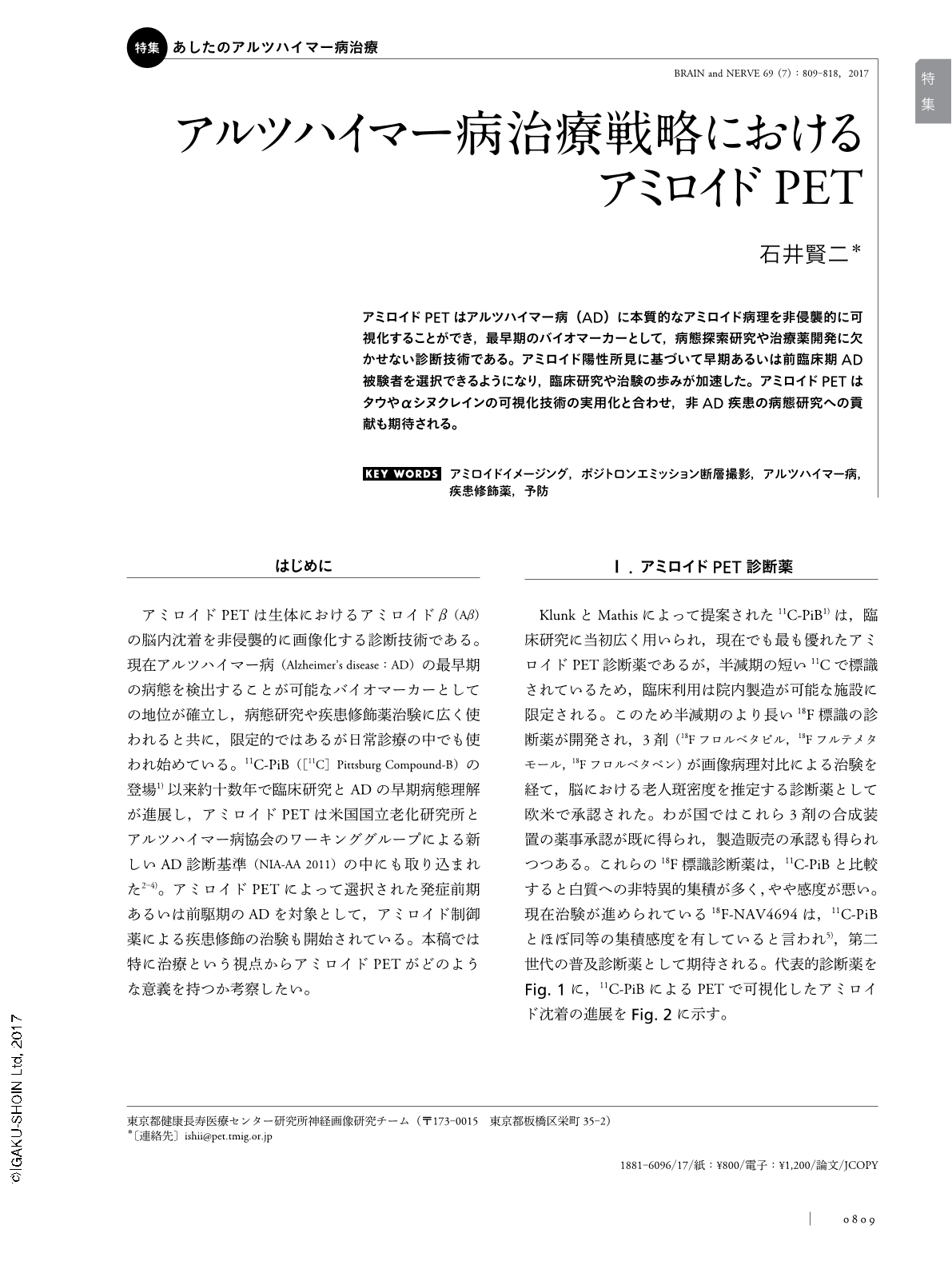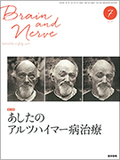Japanese
English
- 有料閲覧
- Abstract 文献概要
- 1ページ目 Look Inside
- 参考文献 Reference
アミロイドPETはアルツハイマー病(AD)に本質的なアミロイド病理を非侵襲的に可視化することができ,最早期のバイオマーカーとして,病態探索研究や治療薬開発に欠かせない診断技術である。アミロイド陽性所見に基づいて早期あるいは前臨床期AD被験者を選択できるようになり,臨床研究や治験の歩みが加速した。アミロイドPETはタウやαシヌクレインの可視化技術の実用化と合わせ,非AD疾患の病態研究への貢献も期待される。
Abstract
Amyloid positron emission tomography (PET) has been developed as a non-invasive neuroimaging technique that enables us to visualize the accumulation of fibrillar amyloid-beta (Aβ) in the living human brain with histopathological confirmation. As the deposition of fibrillar Aβ is the earliest detectable biomarker of Alzheimer's disease (AD), amyloid PET is useful not only to increase the probability of a correct diagnostic in clinical practice and clinical studies, but also to enrich appropriate participants in the clinical trials of disease modifying drugs for early stage of AD. The amyloid positivity has been shown to be affected by age and APOE ε4 allele presence. In combination with the emerging technique of tau imaging, amyloid PET will reveal details of the early pathophysiological mechanism of AD, which will lead to the development of effective disease modifying therapies and prevention strategies. Amyloid negativity by amyloid PET is the most reliable marker to exclude the possibility of AD in the differential diagnosis of dementia diseases. Therefore, amyloid imaging is also essential for the clinical studies and clinical trials targeting non-AD dementia diseases such as frontotemporal lobar degeneration, argyrophilic grain disease and neurofibrillary tangle dominant disease. Establishing an in vivo imaging technique to visualize tau and alpha synuclein will accelerate further understanding of non-AD dementias.

Copyright © 2017, Igaku-Shoin Ltd. All rights reserved.


